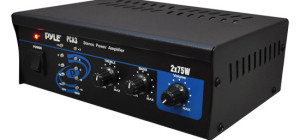 Depending on what season you are in, maintaining the proper humidity level in your home can be challenging – especially during the winter months when the weather can be quite dry. In those seasons of dryness, a great option to combat that would be to make use of a humidifier. Using this item can really help tackle any issues you might have with low levels of moisture. An ultrasonic humidifier is constructed from fairly new technology that enables you to humidify a space in your domain by making use of less energy than other forms of humidifiers.
Depending on what season you are in, maintaining the proper humidity level in your home can be challenging – especially during the winter months when the weather can be quite dry. In those seasons of dryness, a great option to combat that would be to make use of a humidifier. Using this item can really help tackle any issues you might have with low levels of moisture. An ultrasonic humidifier is constructed from fairly new technology that enables you to humidify a space in your domain by making use of less energy than other forms of humidifiers.
Below you will find additional information as to how ultrasonic humidifiers function and how they can be of benefit to you.
Operating an Ultrasonic Humidifier
When an ultrasonic humidifier is in use, it is able to add moisture to the air through its metal or ceramic diaphragm. This occurs after the water travels through a pipe that leads to the piezoelectric transducer’s diaphragm.
The water that is used to create moisture moves from the tank and then travels through a demineralization cartridge – though it is important to note that while some ultrasonic humidifiers have these cartridges, not all do.
This item then vibrates at incredibly high frequencies in an effort to create microscopic water droplets. In order to push those droplets in the air, a circulation fan then blows them into the atmosphere of the room. These droplets then evaporate and ultimately add humidity to the air.
Understanding Piezoelectric Transducers
In order for the ultrasonic humidifier to produce mist and droplets, the bulk of this process occurs in the piezoelectric transducer, which is a section of the humidifier that transforms the electrical energy into high-frequency vibrations. The transducer then connects a diaphragm. This diaphragm then creates mist droplets as a result of vibrating against water.
How Humidity is Produced by Ultrasonic Atomization
In your humidifier, the atomization process is what is needed for humidity to be created. This process entails that there is a cavitation bubble implosion (which is when tiny bubbles are generated following changes in amplitude), and the capillary wave theory takes place (which is when waves are created by the vibrating surface and small mist droplets are emitted).
When both of these processes take place, your ultrasonic humidifier will use very little energy in order to create mist for a long period of time. And as the speed of the vibration increases, air bubbles start to form as a result of cavitation – which is when broken capillary waves are generated, and droplets are circulated in the air.
Ultrasonic Humidifiers Versus Other Humidifiers
In addition to ultrasonic humidifiers, there are a variety of other models which each have their advantages and disadvantages. Some of these humidifiers include impeller humidifiers, evaporative humidifiers, and steam humidifiers, among others.
If you are considering an evaporative humidifier, these are among the most common humidifiers. In essence, these humidifiers add moisture to your environment by blowing air through a saturated filter. While they can be pretty noisy (because they need a large fan to produce droplets) and require ongoing maintenance and filter changes, they are fairly easy to set up and do not require the use of distilled water to work.
Another great option is to go with an impeller humidifier which is fairly similar to an ultrasonic humidifier. This humidifier entails the use of a spinning disc that creates mist particles by splashing water over a diffuser. One of the disadvantages of this humidifier is that they are quite noisy as a result of having a number of moving parts. And one common feature that this humidifier shares with ultrasonic machines is that you have got to use distilled water due to the fact that both do not have a filter.
A third option that you might consider is a steam humidifier that produces steam by heating up water and releasing moisture into your environment. This particular humidifier is great in the winter period and deals with any kind of respiratory conditions that might be exacerbated by the challenges of cold, dry air.
Unlike the other options, this kind of humidifier consumes a lot of energy. The reason for this is that it needs to boil water to create steam. The other disadvantage of this humidifier is that it has heating elements inside that could potentially pose a safety concern or burn if the humidifier is not properly taken care of.
Usage Tips for Ultrasonic Humidifiers
When using an ultrasonic humidifier, there are a few tips to keep handy. First, try always using distilled water rather than tap water, as regular water may still have minerals and particles that could harm the performance of your machine.
As well, be sure to clean your humidifier regularly, as doing so will prevent any bacteria or mold build-up. In addition, keeping it stored in a proper place – namely on a table or shelf – is key as this will help reduce any moisture accumulation around the base. Finally, try your best to place your humidifier on a plastic tray to catch any moisture and avoid damaging your floor or furniture.







